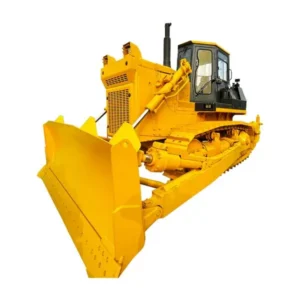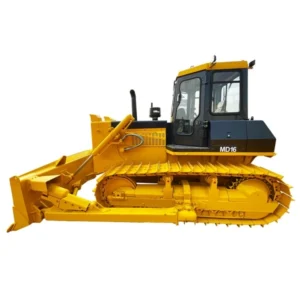Introducción
In the construction industry, bulldozers play a crucial role in site preparation, grading, and earthmoving tasks. Choosing the right dozer size is essential for maximizing productivity, efficiency, and cost-effectiveness on any construction project. This comprehensive guide will delve into the various dozer sizes, their applications, and how to select the right one for your needs. We will cover everything from small dozers for residential projects to large dozers for heavy construction, ensuring you have all the information needed to make an informed decision.
Understanding Dozer Sizes

What are Dozer Sizes?
Dozer sizes refer to the classification of bulldozers based on their weight, horsepower, and blade size. These factors determine the machine’s capability to handle different types of tasks, from light-duty grading to heavy-duty earthmoving. Dozers are typically categorized into three main sizes: small, medium, and large.
Importance of Selecting the Right Dozer Size
Choosing the right dozer size is crucial for optimizing productivity and minimizing operational costs. An appropriately sized dozer ensures efficient completion of tasks, reduces fuel consumption, and minimizes wear and tear on the machine. Understanding the specific requirements of your project will help you select the best dozer size for the job.
Types of Dozer Sizes and Their Applications
Small Dozers:
Features and Capabilities
Small dozers, also known as compact dozers, typically have an operating weight of up to 20,000 pounds and horsepower ranging from 70 to 150 HP. These machines are designed for maneuverability and precision, making them ideal for tasks in confined spaces.
Common Applications
- Residential Projects: Small dozers are perfect for landscaping, driveway construction, and small-scale grading.
- Utility Work: Their compact size makes them suitable for utility trenching and pipe laying.
- Road Maintenance: Small dozers can efficiently handle road maintenance and minor repair work.
Medium Dozers:
Features and Capabilities
Medium dozers have an operating weight between 20,000 and 60,000 pounds and horsepower ranging from 150 to 250 HP. These machines offer a balance between power and versatility, making them suitable for a wide range of applications.
Common Applications
- Commercial Construction: Medium dozers are used for site preparation, grading, and excavation in commercial projects.
- Agricultura: They are effective in land clearing, field preparation, and farm road construction.
- Silvicultura: Medium dozers are employed in forestry operations for road building and site preparation.
Large Dozers:
Features and Capabilities
Large dozers, also known as heavy dozers, have an operating weight exceeding 60,000 pounds and horsepower ranging from 250 HP and above. These machines are built for heavy-duty tasks and are equipped with powerful engines and large blades.
Common Applications
- Minería: Large dozers are essential in mining operations for overburden removal and site reclamation.
- Heavy Construction: They are used in large-scale earthmoving, highway construction, and dam building.
- Land Development: Large dozers play a crucial role in land development projects, including mass grading and excavation.
Comparison of Different Dozer Sizes
To help you understand the differences between various dozer sizes, here is a detailed comparison table:
| Dozer Size | Operating Weight (lbs) | Horsepower (HP) | Common Applications |
|---|---|---|---|
| Topadoras pequeñas | Up to 20,000 | 70-150 | Residential projects, utility work, road maintenance |
| Medium Dozers | 20,000-60,000 | 150-250 | Commercial construction, agriculture, forestry |
| Large Dozers | Over 60,000 | 250+ | Mining, heavy construction, land development |
Factors to Consider When Choosing a Dozer Size
Requerimientos del proyecto
Task Type and Scale
The type and scale of tasks you need to complete will significantly influence the choice of dozer size. For instance, small dozers are suitable for precision tasks, while large dozers are required for heavy-duty earthmoving and excavation.
Site Conditions
Terrain and Space
Consider the terrain and available space on your construction site. Small dozers are ideal for tight spaces and uneven terrain, while larger dozers require more room to operate effectively.
Budget and Cost Efficiency
Purchase and Operating Costs
Budget constraints and cost efficiency are crucial factors. Smaller dozers generally have lower purchase and operating costs, making them suitable for smaller projects. Larger dozers, while more expensive, offer higher productivity for large-scale projects.
Maximizing Productivity with the Right Dozer Size

Optimizing Performance
Proper Maintenance
Regular maintenance is essential for keeping your dozer in optimal condition. Scheduled maintenance checks and timely repairs ensure the machine operates efficiently and reduces the risk of breakdowns.
Capacitación de los operadores
Skilled Operation
Investing in operator training can significantly enhance productivity. Skilled operators can maximize the efficiency of the dozer, ensuring tasks are completed accurately and swiftly.
Utilizing Technology
Advanced Features
Modern dozers come equipped with advanced features such as GPS and automated control systems. Utilizing these technologies can improve precision, reduce operational time, and enhance overall productivity.
Conclusion: Dozer Sizes
Selecting the right dozer size is critical for maximizing productivity in construction projects. Understanding the capabilities and applications of small, medium, and large dozers will help you make an informed decision that aligns with your project requirements and budget. Regular maintenance, skilled operation, and the use of advanced technology further enhance the efficiency and effectiveness of your chosen dozer.
Preguntas Frecuentes
What factors should I consider when choosing a dozer size?
Consider the type and scale of tasks, site conditions, budget constraints, and cost efficiency. Assessing these factors will help you choose the most suitable dozer size for your project.
How do small dozers differ from medium and large dozers?
Small dozers are compact and designed for precision tasks in confined spaces. Medium dozers offer a balance between power and versatility, while large dozers are built for heavy-duty tasks and large-scale projects.
Can operator training impact dozer productivity?
Yes, skilled operators can significantly enhance productivity by maximizing the efficiency of the dozer, ensuring accurate and swift task completion.
What are the common applications of large dozers?
Large dozers are commonly used in mining operations, heavy construction, and land development projects due to their powerful engines and large blades.
How can technology improve dozer performance?
Modern dozers equipped with GPS and automated control systems improve precision, reduce operational time, and enhance overall productivity, making tasks easier and more efficient to complete.








-150x150.webp)
